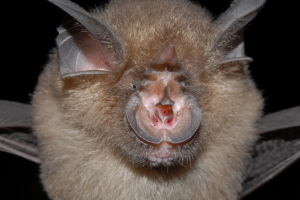The Intermediate Horseshoe bat (Rhinolophus affinis) is one of the most common cave species using constant frequency (CF) calls in Southeast Asia. In the past, variations of morphology and echolocation calls within the species have been observed among different geographic populations. However, the patterns of intra-specific variations across its extent and phylogeographic relationships among traits had not been not been fully explored. Cambodian researcher, Mr. Saveng Ith, led research on the geographic variation of R. affinis in mainland Southeast Asia. With morphological data, the researchers validated the two named subspecies in the region and reported a third form from Vietnam and Myanmar. Echolocation calls also show high variation in peak frequency but the divergence cannot be correlated with morphological form nor maternal lineages. The mismatches between the three traits in this study pose further questions on how CF bat species shape their morphology and echolocation.
The findings are published in the latest issue of Zoological Studies by Saveng and his collaborators, including another seven SEABCRU associates.
Original Citation: Saveng Ith, Sara Bumrungsri, Neil M Furey, Paul JJ Bates, Monwadee Wonglapsuwan, Faisal Ali Anwarali Khan, Vu Dinh Thong, Pipat Soisook, Chutamas Satasook and Nikky M Thomas. Taxonomic implications of geographical variation in Rhinolophus affinis (Chiroptera: Rhinolophidae) in mainland Southeast Asia. Zoological Studies, 54(31): p 1-29.

